

Binocular Reviews Home > Birding
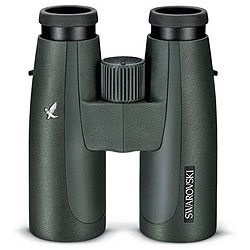 In this section of the BBR site, you will find articles, documents and guides related to birding in general as well as advice on choosing the best bird watching binoculars for your specific needs and requirements:
In this section of the BBR site, you will find articles, documents and guides related to birding in general as well as advice on choosing the best bird watching binoculars for your specific needs and requirements:
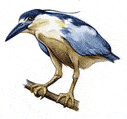 This is the main section and where to start if you are looking to buy a pair of binoculars that will mostly be used for general birdwatching.
This is the main section and where to start if you are looking to buy a pair of binoculars that will mostly be used for general birdwatching.
In it, I explain the most important features to look out for and why, so that you can make an informed choice based on your specific requirements.
I also list some of the best birding binoculars that I have reviewed in a number of different price brackets and size categories.
 Every year since 2010, I have highlighted and honored the very best optics in a whole range of categories, including those ideal for bird watching by giving them a BBR Best Binos award.
Every year since 2010, I have highlighted and honored the very best optics in a whole range of categories, including those ideal for bird watching by giving them a BBR Best Binos award.
This year I have gone one step further and have included a whole section dedicated to the very best binoculars in a whole range of categories that includes:

Best value for money bin in 2018 and 2019, these Hawke Endurance ED's are most certainly get you plenty bang for your buck and on top of that are perfect for most birdspotting needs and are still every bit as relevant today.
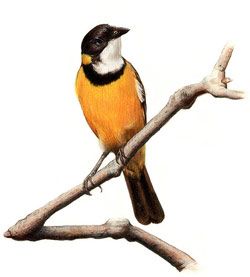
Here I have taken my list of what I consider to be the best value for money binoculars and then selected only those that have also been rated as being ideal for birding from this list.
What is left are what I feel are the best value birding binoculars that I have reviewed on BBR.
 10x42 Binoculars for Birding
10x42 Binoculars for BirdingThe general advice for most types of birding is to get a binocular with a wide field of view as this feature is more often than not preferred over a more powerful magnification and a narrower view.
This is exactly why most birders tend to use an instrument with a an 8x or even 7x magnification.
However there are certain circumstances and types of bird watching where slightly more power trumps the width of view.
In this article, I explore these circumstances and offer up some advice as to why you would use 10x42 Binoculars for Birding
In this in-depth article, we compare four of the very best 10x42 binoculars to see which is best for birding:
The Leica Trinovid-HD 10x42, Swarovski SLC 10x42, Vortex Razor UHD 10x42 or the GPO Passion HD 10x42 Binoculars.
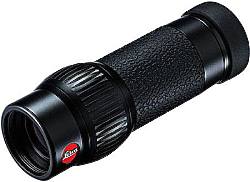 Basically half a binocular, there are both advantages for, as well as downsides against a monocular when compared to a binocular for birding.
Basically half a binocular, there are both advantages for, as well as downsides against a monocular when compared to a binocular for birding.
On the plus side, they are both smaller and cheaper. However with a monocular you get a less immersive experience and they can be a bit more tricky to keep still.
However for the right application they can be either a good alternative or something that you can use in conjunction with your binos.
In this guide, I take a look at some of the best birding monoculars in a range of categories to help you find the ideal one for your needs and budget.

Having a really wide field of view (FOV) is really important to some people and in some situations. Many birders particularly look for binocular with a wide viewing angle.
In this section, I explain the field of view, why and when it is important and list some of the widest available:
>> Wide Angle Binoculars
>> Wide Angle 10x42 Binoculars
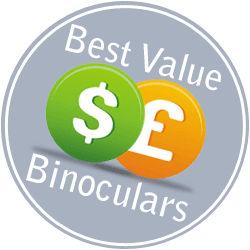
What exactly makes good value for money and can you have a really expensive binocular that is better value than a cheap one?
I explore these and other questions as well as list what I believe are the best value optics in a range of different price categories:
>> Best Value For Money Binoculars
>> Best Value Birding Binoculars
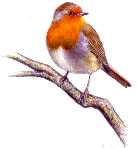 I have always enjoyed birding from my back yard (garden when I was in Zimbabwe and the UK) as it has many advantages over going out to view "wild" birds.
I have always enjoyed birding from my back yard (garden when I was in Zimbabwe and the UK) as it has many advantages over going out to view "wild" birds.
These advantages include not having to worry about carrying your gear about and because many of the birds get used to you being about and the fact that they are fed via bird feeders, means that you you can often get very close.
As well as photography, this is great for really close observation with a good pair of bins. So what exactly makes a good pair of backyard binoculars? In this guide I go through the main features to look out for and offer some of my own recommendations.
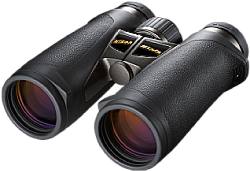 Nikon Sport Optics manufacture and produce a truly massive range of binoculars that vary in price from well over $3000, right down to many that cost less than $50.
Nikon Sport Optics manufacture and produce a truly massive range of binoculars that vary in price from well over $3000, right down to many that cost less than $50.
Within these price categories they have models ideally suited for many activities and uses including travel, hunting, marine use, security, general use, astronomy, wildlife observation and of course birding.
But with such a huge selection it can be very difficult narrowing it down to the right model perfect for you, the type of bird watching you do and your budget.
In this article I aim to help by selecting my top recommendations in each price category, size and also take a look at which Nikon porro prism binoculars are ideal for birding.
 Partly as a gift for my daughter and partly because I wanted to spend more time with her working on a project together and partly because I am always on the lookout for better views and indeed better images of birds, we decided to get ourselves an IP Bird feeder camera.
Partly as a gift for my daughter and partly because I wanted to spend more time with her working on a project together and partly because I am always on the lookout for better views and indeed better images of birds, we decided to get ourselves an IP Bird feeder camera.
In this article/review I go over the reasons why we chose to get a wired IP camera that can be used on a feeder as well as in a nesting box, how we set up the system, video footage of what we have so far achieved and why I believe it makes an excellent gift for just about anyone interested in birds.
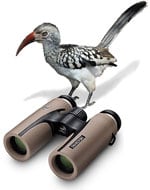
On the banks of the eastern basin of Lake Kariba, within the Zambezi valley is Charara Bay, a place from which many Zimbabweans use as a base to go onto the lake to fish the mighty Tigerfish.
However my main interest was to observe and photograph some of the local wildlife and in particular the incredible variety of birds.
As well as my photography and night vision equipment, I also took along a pair of the Swarovski CL Companion 8x30 binoculars with me to see just how well they would perform out in the field.
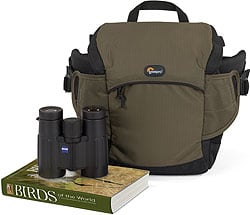
Designed specifically with birders in mind and perfect for not only packing away your bins, but your birding books and and a bunch of other gear that you often take out into the field when birding.
Not only for birding: The Field Station Belt Pack from Lowepro is also a great product for any wildlife enthusiast or researcher.
This small bag fits around your waist and has a pocket that enables you to carry your binoculars.
It also comes with a "shelf" than makes reading from and writing in your bird book, field guide, sketchbook or notebook really simple when out in the field.
Note: This shelf can also be used to carry and use your iPad or other tablet type computer.
Below is a selection of ideal binoculars for birdwatching and bird spotting binoculars that I have fully tested & reviewed:
|
Like most good 8x32 binoculars these are very versatile and well-suited for a wide range of activities and viewing purposes. But added to that you get an exceptional optical performance, a beautiful ergonomic design, the best materials & robust build, are these the best mid-size binoculars ever made? Price: (6/6) Expensive Binoculars | |||||||||||||||
|
|
Magnesium Chassis, Metal Components, Field Flattening Lenses, Extra Low Dispersion Glass, Phase Corrected, Dielectric Coated Prisms... With most of the features and components that you would expect from a high-end binocular, these Vixen Osprey binoculars are priced at a level that places them amongst many of the top mid-level binoculars which is impressive. Price: (4/6) Mid-High Value Binoculars | |||||||||||||||
|
|
Excellent value for money 8x42 binoculars that are both reliable and lightweight.
Highlights include a surprisingly good image quality and brightness, Multi-Coated Optical system with BAK-4 Roof Prisms, and a wide field of view making them a good option for the birder, outdoors, or nature enthusiast shopping on a budget. Price: (2/6) Low Cost Binoculars | |||||||||||||||
|
|
Mid-sized, mid-priced marine binoculars that break the mold using roof prisms, making them far more than just binoculars for boats & yachts. With their 7x magnification, wide views & small size, I found them to also be a great close-range birding, wildlife, & general use bino ideal for adventures like canoeing, kayaking, hiking, camping & more... Price: (3/6) Mid Priced Binoculars | |||||||||||||||
|
|
Fujinon HC 8x42 binocular is outstanding and dare I say it, beautiful pair of optics that certainly stands out from the crowd. I especially like the very wide field of view, which when combined with the excellent quality optics and resulting superb image quality means that you are presented with a view that is just about as good as it gets in both good and low light conditions. Price: (5/6) High Value Binoculars | |||||||||||||||
|
|
Excellent quality and bright image, combined with an extremely wide view and small, lightweight body, these 8x32 Opticron Explorer WA ED-R binoculars are an ideal option for a wide range of uses where you want something a bit smaller than an 8x42, but better low light performance than a full compact binocular. Other highlights include ED glass lenses, dielectric coated, and phase-corrected BaK-4 roof prisms, fully multi-coated optics, and a tough waterproof chassis. Price: (3/6) Mid Priced Binoculars | |||||||||||||||
|
|
This Pirsch ED binocular from the German brand Bresser incorporates a very good level of optics and body components into a mid-sized, easy to carry chassis, all the time keeping half an eye on the cost, with the result being an instrument that offers a very good performance to price ratio. Main optical highlights include ED Glass lenses, a Fully Multi-Coated optical pathway and Dielectric, Phase Corrected BAK-4 Roof Prisms... Price: (4/6) Mid-High Value Binoculars | |||||||||||||||
|
|
Excellent quality mid-sized marine binoculars ideal for speed boating, sailing, yachting or indeed kayaking and canoeing, but can also be used for a number of dry-land activities. Highlights include a tough waterproof chassis and outer armor that is very comfortable in the hands, with high levels of grip. High-quality glass and coatings deliver a bright, vibrant view with extremely low levels of color fringing and almost no softening around the edges of the view. Price: (3/6) Mid Priced Binoculars | |||||||||||||||
|
View >> All binoculars that I have reviewed ideal for Birdwatching
 This month I have decided to bring to your attention one of Europe's and in particular one of Germany's lesser known manufacturers of super quality bins:
This month I have decided to bring to your attention one of Europe's and in particular one of Germany's lesser known manufacturers of super quality bins:
Eschenbach produce some of the best bins available, but because they are perhaps not quite as well known as the other 'alpha brands', their prices are nowhere near as inflated.
These Trophy D 8x42 ED's are a perfect example of this and in regards to their build quality and optical performance are a match for just about anything else out there.
Scoring a mega impressive 9/10 for image quality and with the stats to match, these are without doubt one of the best binoculars for bird watching that I have used and ideal for general wildlife observation and hunting:
Important Optical Features
Wide Field of View
An important feature to many wildlife and in particular birders is one that has a wide field of view which makes it more easily find and then follow animals and birds, especially the small faster moving ones! At 408ft wide at 1,000 yards away, these Eschenbach Binoculars are once again up there with the very best 8x binoculars.
Premium German Quality at a Reasonable Price
Made in Germany to the highest standards, there is no mistaking that the 8x42 Eschenbach Trophy D ED is a quality optical instrument. But what also really impressed me about them was whilst you would never call them cheap, these Mid-High End binoculars currently retial for around: $430 / £309, which is ALOT less than you can expect to pay for many other top of the range premium brands and which is why if you are in the market for a high end pair of optics, you really should take a closer look at these:
![]() Buy & Compare Prices for these Eschenbach Trophy D-ED Binoculars
Buy & Compare Prices for these Eschenbach Trophy D-ED Binoculars
This section contains articles I have written on some of the more technical aspects and features of binoculars and optics in general. They are also the ones that I think are are important as well as relevant to binoculars that you would use for looking at birds with:
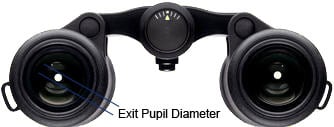 A common misconception is the bigger the exit pupil, the brighter your binoculars will be.
A common misconception is the bigger the exit pupil, the brighter your binoculars will be.
Whilst this is true... to a point as there is only so much light that your eyes can take in. The size of the exit pupil and just how bright an image you will see also varies depending on the surrounding lighting conditions and a bunch of other factors too.
So depending on how, where and when you use your binoculars you may not actually need those giant objective lenses. For more, take a look at my complete guide to the exit pupil.
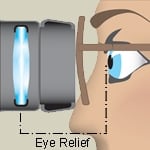 Best Long Eye Relief Birdwatching Binoculars
Best Long Eye Relief Birdwatching BinocularsI have come across many birders over the years who wear glasses, but did not know how to, or even if they could still keep them on whilst glassing.
To do so and still get to view the full image, you need bins with an eyepiece which allows for the adjustment. i.e. you need a good amount of eye-relief.
This article explains exactly what eye-relief is, how much you need and I list some of the very best long eye relief birding bins that hopefully make your choice simpler.
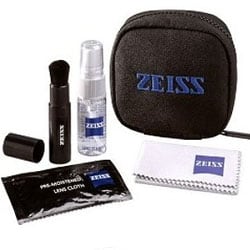
When cleaning your bins, especially the lenses, it is very important that you do it properly and in such a way so as not to scratch or damage the coatings on the glass.
In this guide, we discover the best ways this is achieved by using just a cleaning cloth or specialized optical cleaning kits.

When it comes to birding, the most popular configuration of all full sized binoculars is an 8x42.
There are many very good and valid reasons for this, but is in this article I explore if an 8x42 is right for everyone or would something like an 8.5x45 be better for your specific requirements?
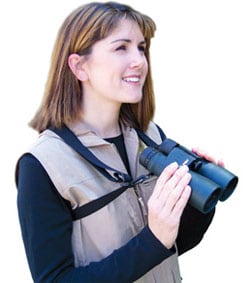 Birding with Binoculars - Aiming
Birding with Binoculars - AimingA good friend of mine recently pointed out to me that main guide to choosing binoculars specifically for birding was for her, a little too technical.
She said that as a beginner, it did not focus enough on the basics like how to actually use your binoculars when birding.
So with this in mind, I started with this article which goes over the basics on how to aim your binoculars so that you quickly lock onto your target before it flies away!
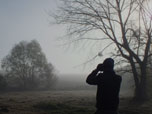 Selecting & Using Binoculars for Winter Birding
Selecting & Using Binoculars for Winter BirdingIt can be much more difficult to use your binoculars in winter when you may be using things like gloves.
In this short guide, I give a few tips on what to look out for in a good winter bin and what else you can do to make them much easier for you to use when it is very cold.
 Upgrading 8x42 Birdwatching Binoculars - what to get? - some advice from the BinoWizard to a reader here on BBR
Upgrading 8x42 Birdwatching Binoculars - what to get? - some advice from the BinoWizard to a reader here on BBR